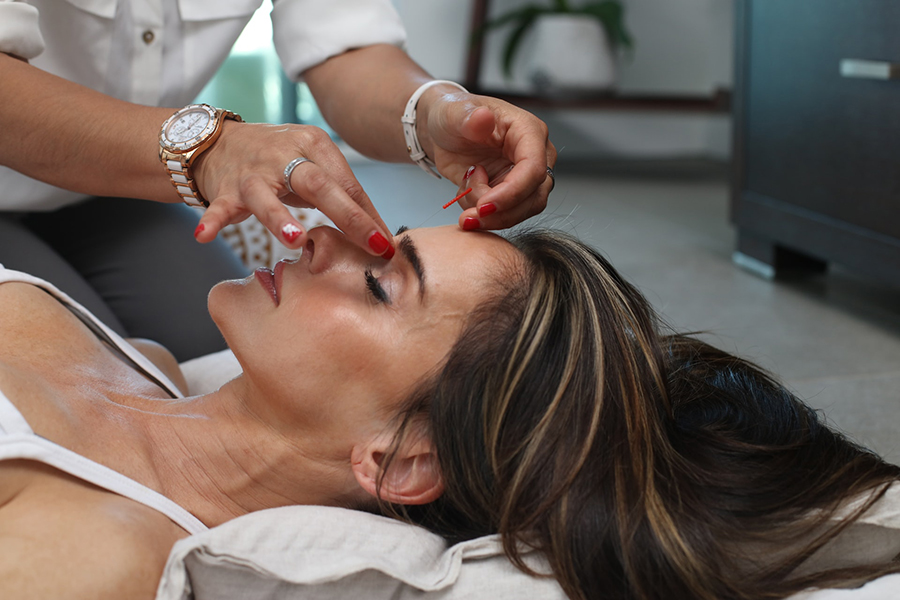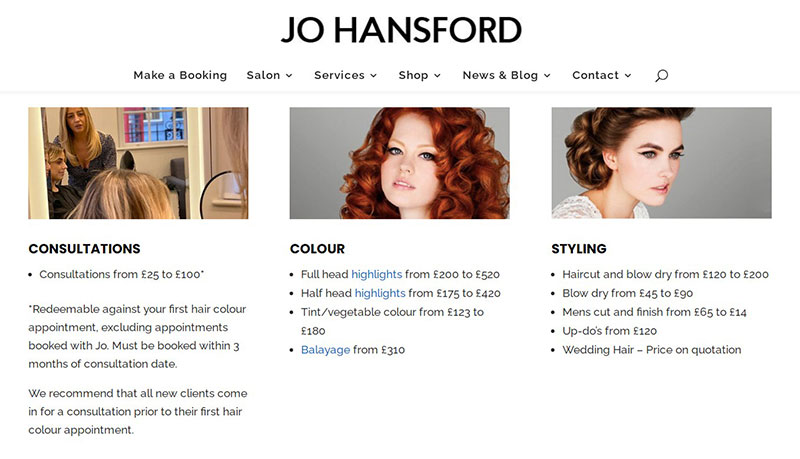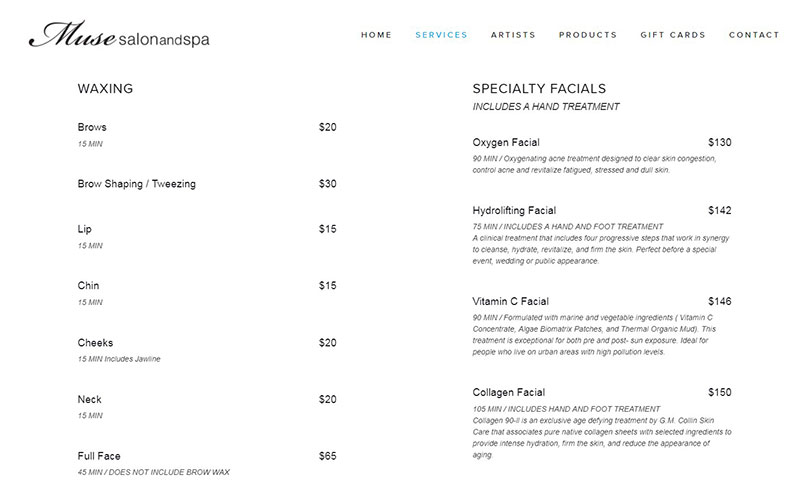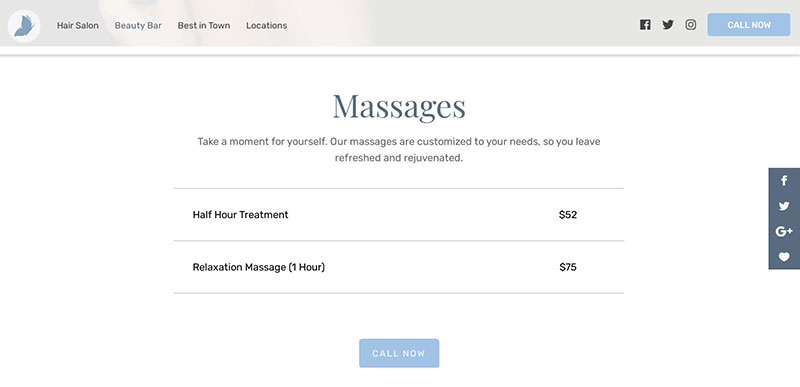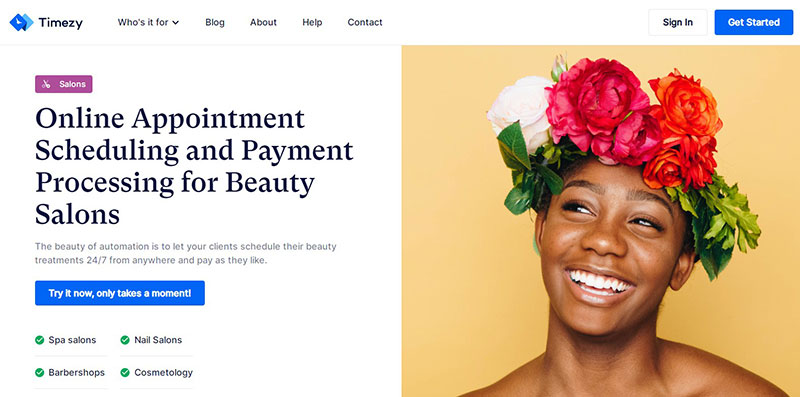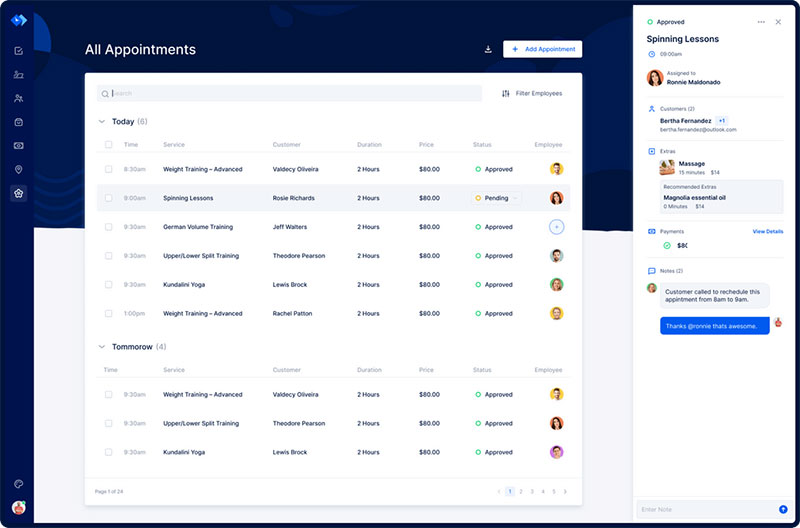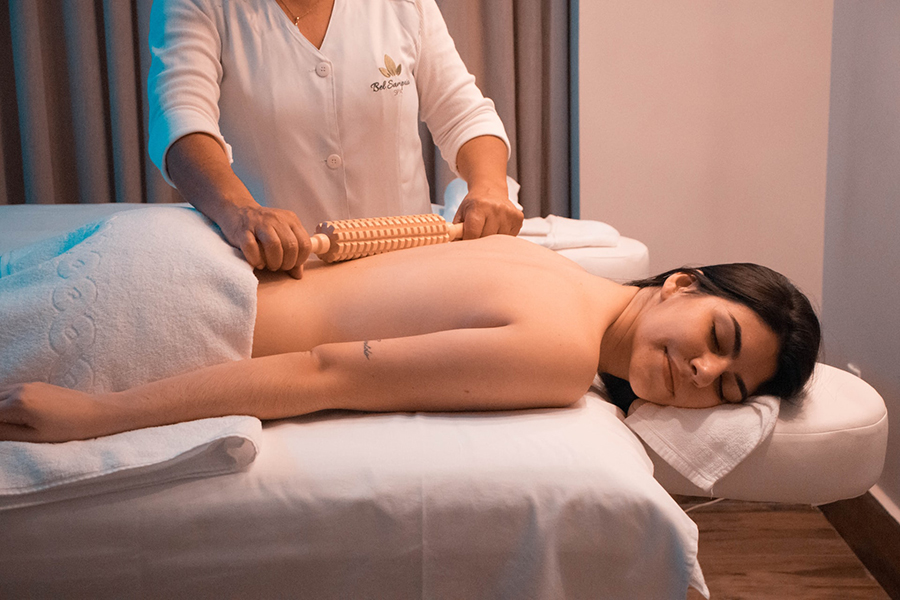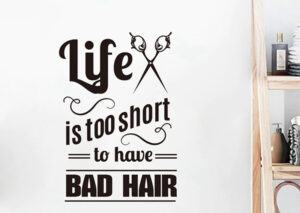A spa menu is a printed document that shows the reader the unique character of the business. It explains what the salon is all about and what services it offers. It is a way of branding the business and must be attractively designed, clear, and consistent. Consistency is crucial when the spa has more than one location. The menu gives the customer the confidence that they can go to any of the locations and receive the same treatment with the same quality standard.
The menu communicates important information to the public, as well as being closely linked with the overall business strategy. Designing a good menu is key in the sales and marketing strategy. In other words, failing to have a stylish and well-written options menu can cost you customers. When preparing a spa menu, there are some things to consider, as this article will outline.
Different Types of Spa
No two spas are the same in size and services they offer. This means that each spa will need a customized menu. A large resort, for instance, will likely offer more treatments than a smaller day spa. A day spa usually offers a smaller and more specific menu. This idea is also true for other kinds of spas and beauty parlors. Therefore, each will present a menu that is different in size and design.
A spa menu should open with a concept statement, which inspires both employees and customers. It must display a philosophy that applies to the facilities, the skills of the people that work there, and the kind of products that are used. At the end of the menu, include a tag line. Something memorable, something like “Escape, Explore, Enrich.”
Define the Target Market
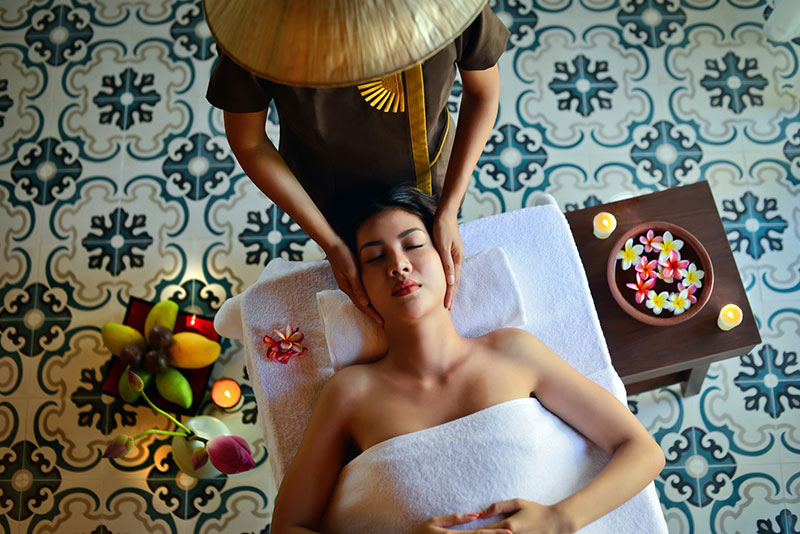
It is important to think about how to reach the target audience of the spa. It is clear that a young man will respond to and is interested in different things than a 60-year-old lady. It is thus not only important to think about what kind of people to target, but also about how to address this audience.
So, when making a menu, think about the demographic that will make up the future clientele. Are they men or women? What age group do they belong to? Do you have particular skills that focus on a specific kind of client, like anti-aging treatments?
It is possible to target different customer groups, but that should also reflect in the spa menu. In that case, using different sections that attract different audiences, is a smart thing to do.
Also, do not forget your strong points and treatments that you enjoy performing. Also, do not hesitate to get inspiration from menus from other spas and parlors. Especially, larger spas probably have invested a lot of time and energy in designing theirs, so make use of that expertise. There is no need to do all of that work again. However, do not forget to give it a personal touch as well. Following these tips is the start to success.
Focus on the Client
Although a menu should have personal touches, the main focus is on the client, i.e the experience they hope to receive. They look for a relaxing and refreshing time and want to be pampered. A little background of the spa is interesting, but that is probably not the client’s main interest.
Instead, focus in the menu on how the client will feel after they have undergone any spa treatments. Focus on their interests and needs.
Go for High Quality
People usually look for quality. Make sure that the menu reflects the quality that is being offered. Use good quality design, ink, and paper. If possible, use the services of a professional graphic designer and have the menus professionally printed. It costs a bit more, but it will pay off.
If hiring professionals for printing and designing is outside your budget, make sure to use nice-looking paper instead. People that look for quality will not only look at the content of the menu but also its appearance. If they do not like the quality of the menu, they may have very low expectations of the treatments as well.
Create Treatment Categories
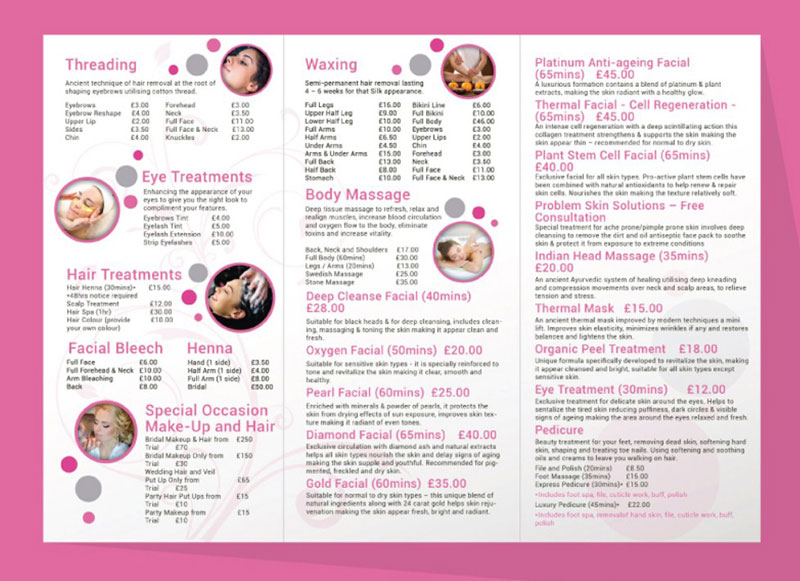
Image source: Ahsan Alvi
With a draft list of the offered services, the next step is to categorize them. Most likely, a customer comes and looks for a specific treatment, rather than picking up the menu and looking for something that might interest them. If, for example, they are looking for a massage, they probably do not want to go through the whole menu to find the treatments that fall in that category. It is much easier for them to go to a section labeled ‘Massages’ or ‘Skin Treatments’, find what they like most, and check the prices.
Many spa owners have noticed that including some general categories works well. These include ‘Add-Ons’, ‘Body Treatments’, ‘Facial Treatments’, ‘Packages’, and ‘Waxing’. Sections like ‘Add-Ons’ and ‘Upgrades’ are usually placed at the end of the list.
Playful names for the categories can give a personal touch to the menu. Some examples are ‘Bye Bye Blemishes’, ‘See Ya Later Spots’, and ‘Walk Away Wrinkles’.
Some notes here: Make sure that the categories are balanced. Do not put too many options in a category, which makes it harder to choose.
Also, think about the order in which the offered spa treatments are listed. Start the menu with the higher-end treatments. In this way, the client will go down the list and pick the one that matches their budget. Hopefully, they will pick the one that gives the business a better profit.
Bring the Descriptions to Live
Many spas have a design theme or a concept. Some common examples are clinical, tropical feel, urban oasis, and Zen. Make use of a concept like that. It does not matter what the idea is, but make sure that it is reflected in the wording and design of the menu. This is a great way of branding a business or location.
Instead of dryly giving the technical details of treatment, consider giving a sensory description to the client. A facial can be described as “Aromatherapy and the serene sound of water begin this harmonizing 60-minute journey to bliss. While improving your circulation and ridding your skin of impurities, your senses are invigorated from a unique combination of restorative organic ingredients and traditional Eastern acupressure. The facial ends with an energizing scalp massage to quiet the mind and balance your meridian.”
Give Clear Pricing
Most people like it when they receive clear and direct information, especially when it comes to money. It is common and even polite to show prices for the spa treatments on the menu. In that way, even before going to the place itself, people can see whether the spa is something for them.
Be clear about the cost of each treatment. Give the price right next to or below the description. Preferably stay away from prices like $79.99. Give clear, round numbers. This is luxury treatment, not a sale.
An option is to show offers and promotions on the menu too. Use a special section for that, for example on the back or at the bottom. This will make the offer easier to understand.
Describe the Treatments
Describe treatments and focus on the experiences. Explain step by step what they can expect. Focus on special experiences. What are the key sensations of a treatment? What are specialties and signature therapies? Is there a standard procedure that can be tailored to the needs and wishes of the client? Highlight these things, as they make therapies personal and special.
These kinds of add-on treatments are the ones that can generate a special profit for the business. So be sure to guide the customers towards them. Highlight them on the menu by using different colors, put an attractive box around them, and showcasing them in prominent places on the menu.
To help people who scan through the list to find what they are looking for. List the main elements like body scrub, facial, and wrap in an eye-catching way. Details that engage the fantasy of the reader can be put below in the main part of the description. Think of details like, ‘Be smothered in lashings of organic coconut, lime, and shea butter’.
Stick to consistent timings, like 30, 45, 60 minutes. Keep the add-ons and customizable treatments to the fore to maximize profit. Draw the attention of the customer with an attractive box in the middle of the menu.
Accuracy Is Important
After writing the complete draft, take time to review it and make sure that is written well. Pay close attention to spelling and formatting mistakes. Clients are often quick to pick them out and they may draw negative conclusions from them. Go over it several times to check for tone and mistakes. It is strongly advisable to ask several other people to look at it as well.
Imagine yourself reading a menu that is full of mistakes. What kind of impression does it give? Would you be happy to make use of the services of that company? Likely not. This is therefore a step that deserves full attention. If possible make use of the skill of a professional editor.
Consider the Design
Now the text is ready, it is time to think about how to present the information in an eye-catching manner. This includes the way the information is presented and the overall design.
This is a job that requires balancing. Of the two aspects, text and layout, neither should be sacrificed in favor of the other or anything else.
Again, the most important factor to consider is the audience. A simple design is what usually works best. It is about presenting the information. A busy and elaborate design distracts and obscures the message. Make sure that the text is easy to read and to use attractive images. The overall feeling should be inviting, friendly, warm, and relaxing. Yet, do not go overboard. The images and design must also be accurate.
To get a professional-looking design it is often best to get the help of a graphic designer. It is not hard to find one and it does not have to cost a lot of money. An internet search will lead to many websites with freelance designers offering their services. It gives peace of mind knowing that the right expertise was used to achieve a satisfying result.
This is also a good time to align the design with the theme of the spa. Most people go to a spa to relax, so be sure to emphasize this in the design. A minimal theme is preferable.
Use fonts like Arial and Times New Roman. They may not be very original, but they are best for readability. Do not reduce font size to squeeze in more information, as this will make it more difficult to read. It is better to reword some things, or even to remove some less profitable body treatments, than to cram everything on the list.
Use Visuals
Visual aids, like pictures, are a great way of highlighting certain treatments. It allows the client to see themselves undergoing one of the treatments on the list.
People are drawn towards pictures that activate their imagination and that engage the senses. The feeling that they should get from an image is rejuvenation and relaxation. Things to include are therefore product, treatment, and environment. Use actual images of the spa or parlor if it gives an idea of luxury, escaping and if it has an elegant design.
The Golden Triangle
When we first see a document or image, our eyes are first drawn to the middle, and then we start to read from left to right.
Marketing experts know this and they call the area in the middle, top left, and top right the “golden triangle”.
This golden triangle is the best place to put the most vital information. The right things to highlight in this area are the treatments that are economical of most value for the owner.
Content is King
When describing a treatment, two things are important to mention: the features and the benefits. The features focus on what the procedure is all about and the products that it involves. It is interesting for clients to know that, but to sell something it is so much better to highlight what the benefits for the customer are.
For example, a facial treatment can be described as follows:
“This rejuvenating facial is packed with powerful antioxidants like vitamin E, lycopene, and resveratrol.” This sounds interesting, but it probably means nothing to the customer. The benefits are emphasized by adding, “Help combat free radical damage that leads to sunspots, aging, and dullness. This facial will leave your skin refreshed, nourished, and hydrated.” Both parts together give a good description and compel the person to get the package.
Make the Copy Engaging
Fight the tendency to write too much and to use too many words. The more to the point, the more vigor and power it will have. This is true for most sections of a menu. However, the treatments that are more important and that should be put more in the limelight can be a bit wordier. For example, a description of a massage with all the products and benefits for the client can be adorned with some extra stylized wordings.
However, if you use more words, make sure that it does not lose its power. Especially when the text is a bit longer, make sure that each word counts and adds something to the story.
A copywriter helps with grammatical errors and with producing an engaging, flowing copy that invites customers to buy.
Offer Online Booking
A successful way of increasing sales is by offering online spa bookings. We live in a world where life is always busy, so many clients look for the convenience of making online appointments from their mobile devices. It is fast, easy, and can be done at any time at any place. So, many clients prefer a spa that has an online booking option in favor of the one that does not.
When using the online booking option, it is of course necessary to offer the menu in an online form as well. It can be presented as an online website with a link to the booking form.
The Last Page
The last page of the menu is the ideal place to give some details about the spa, like booking requirements and cancellation policies. The wording should be inviting yet firm. A spa client is looking for a place to relax and be treated with kindness.
Get Feedback
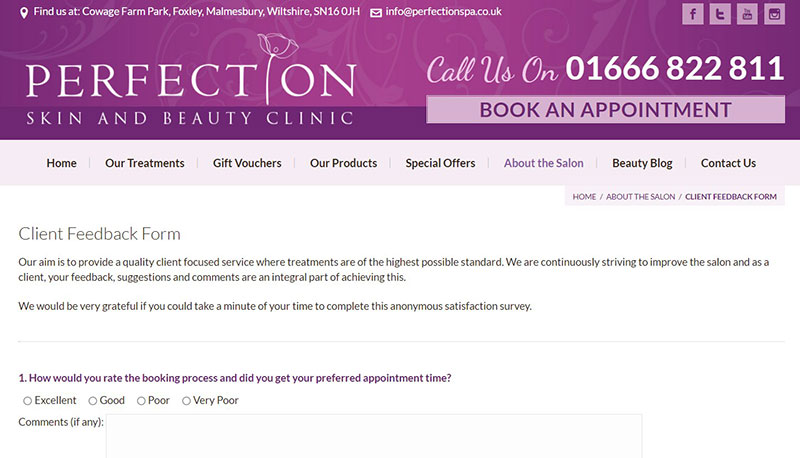
When the menu is complete, do not hesitate to ask others what they think of it. They can give valuable feedback on what needs improvement. Keep these considerations for future purposes. It is very unlikely that the first version will be perfect. Engage friendly experts and trusted friends to give their verdict.
It is also acceptable to ask for input from customers. A special feedback feature can be added to the website to receive ideas. Reward customers with free or discounted treatments, who give useful feedback on the menu, and other aspects of the business. Getting this kind of feedback is part of improving customer service. Many successful businesses do this and it is an excellent way of improving.
Ending thoughts on creating a spa menu
A good spa menu helps customers to choose the treatment that suits them best. It helps the owner by focusing on the most profitable options. It showcases the kind of spa and the kind of services it provides.
A menu is more than functional. It is something that attracts and holds the attention of the prospective customer. A good quality menu speaks well of the spa.
Use the ideas above to make a spa menu that sells.
Get more bookings with the right tool for the job
Staying organized has never been easier.
You can now manage your business and grow your brand with a single, powerful software that keeps all of your appointments in line, your clients organized and your business booming.
Trafft is the perfect salon software for business owners who need to streamline their booking experience both for their staff and their clients.
Trafft handles everything for you, even sending automated email or SMS reminders to your clients. No-shows? Not anymore!
The Trafft booking software adapts to different industries for a blissful online booking experience and employee management.
Want to know more? Check out Trafft’s awesome features to see what you are missing.
If you enjoyed reading this article on spa menu examples, you should also read this one about the salon cancellation policy.
We also wrote articles about similar subjects like how to get more clients in a salon, salon dimensions, salon insurance, salon lighting ideas, spa quotes, hairstylist quotes, and how much salon owners make.




